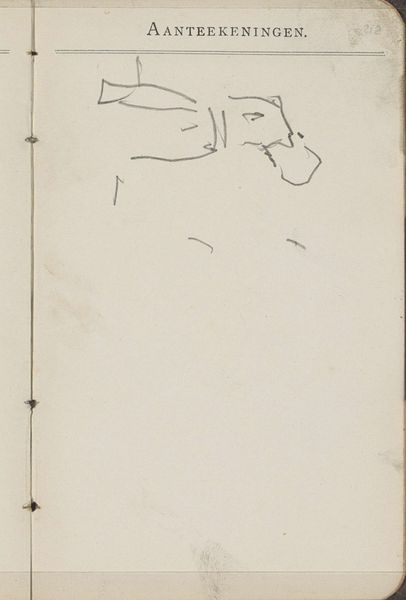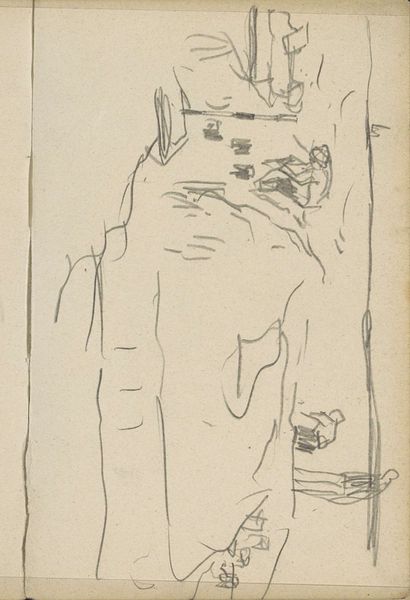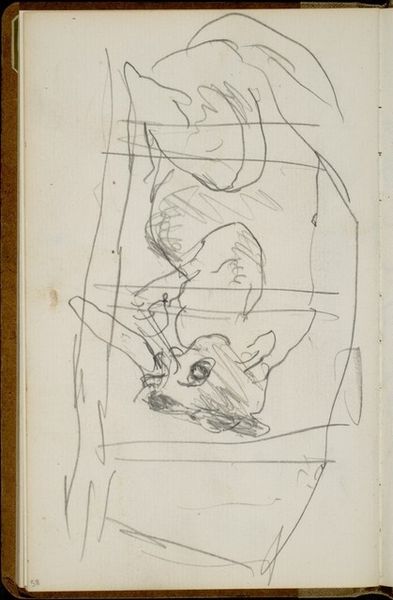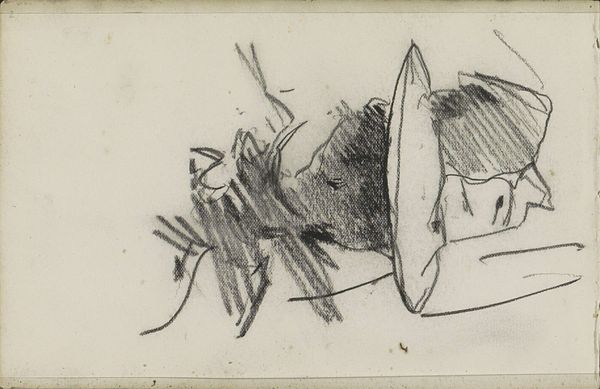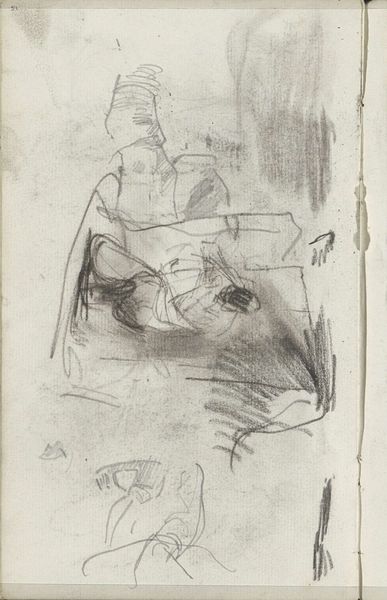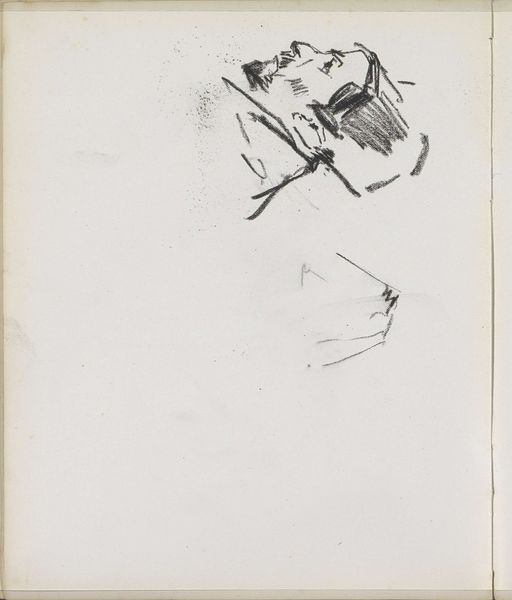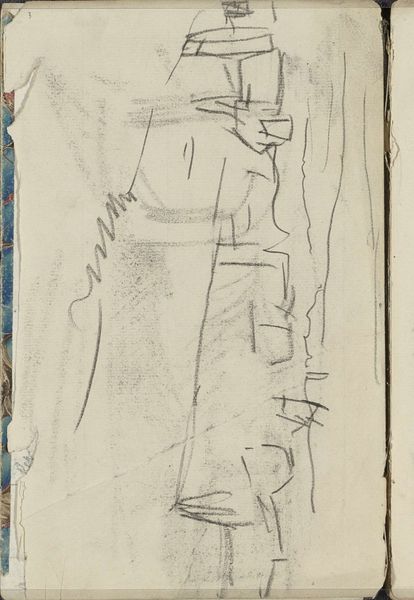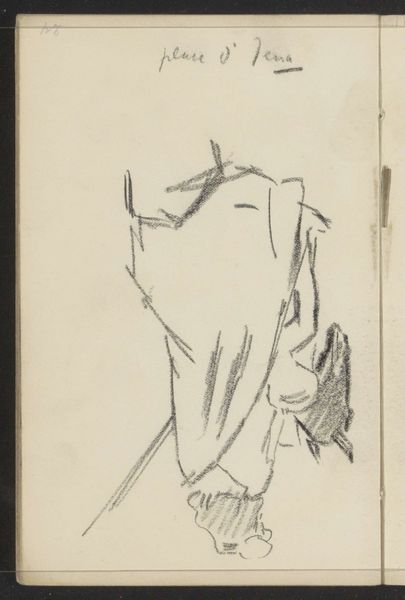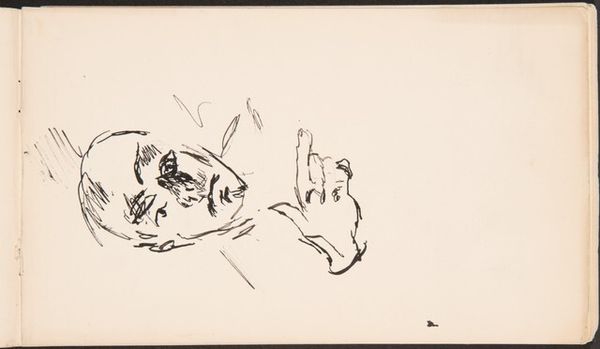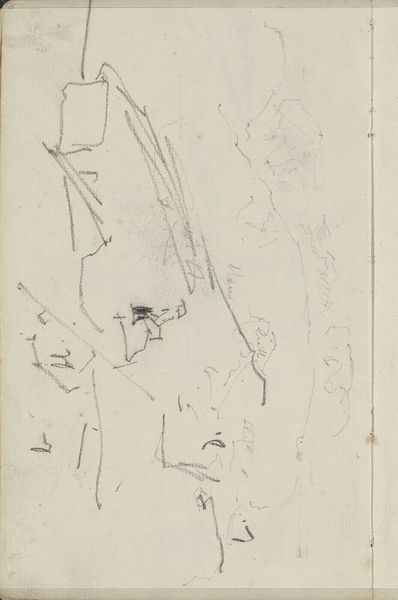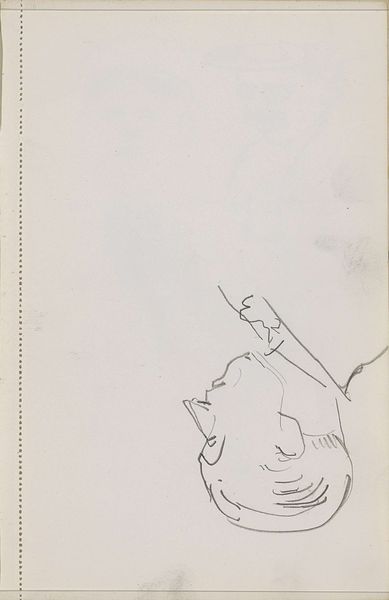
drawing, pencil
#
drawing
#
pencil sketch
#
figuration
#
pencil
Copyright: Rijks Museum: Open Domain
Curator: This pencil drawing, "Standing Man with a Hand on his Hip," created by George Hendrik Breitner sometime between 1880 and 1906, offers a glimpse into the artist's process. What strikes you first? Editor: Well, initially, I’m struck by how gestural and seemingly unfinished it is. There's a raw, almost defiant energy to the quick lines. It feels like a challenge to traditional portraiture, immediately evoking for me questions of working-class representation and masculinity in the Netherlands at the turn of the century. Curator: I agree regarding the energy, however I see that the beauty resides within the compositional structure itself. Notice how the fragmented lines create an interesting tension on the page. The subject is almost dissolving, pushing the boundary between representation and abstraction. This raises compelling questions about what Breitner sought to convey with this technique. Editor: Precisely. Breitner lived during a period of vast societal changes; urbanization was rampant. This dissolving effect perhaps symbolizes the fleeting nature of modern life, the alienation of the individual within a rapidly changing urban environment. Curator: It may, yet these visual cues lead us to the exploration of contrasts in his artistry. The confident, almost crude strokes that make up the figure's stance create tension against the stark white void, a space charged with possibilities. The pencil line itself serves as both definition and erasure. Editor: Indeed, and in terms of gender dynamics, placing a man in such a fragmented state makes him vulnerable in a way that directly clashes with more classical depictions of masculine power. Curator: You're offering a fascinating perspective. My engagement rests upon this: what could be said about the line's semiotic and metaphoric agency within the image? Is it merely utilitarian, or does its texture communicate as deeply as the figure's implied form? Editor: Thinking about its artistic agency enriches its ability to critique societal hierarchies of looking and seeing during the era. It is interesting to think about its capacity to not only depict but also to comment. Curator: So, whether viewing it through a lens of pure form or through socio-historical context, Breitner’s sketch provides endless points of inquiry. Editor: Ultimately offering a snapshot into a society wrestling with rapid modernization and the role of the individual within that turbulent landscape.
Comments
No comments
Be the first to comment and join the conversation on the ultimate creative platform.
